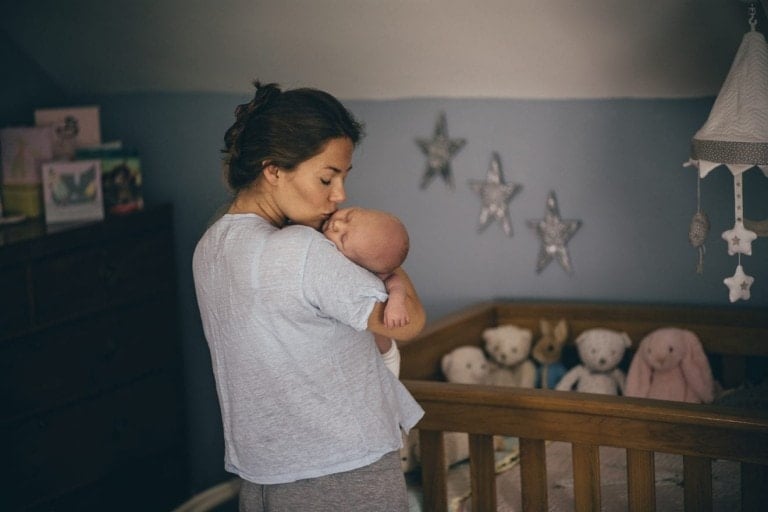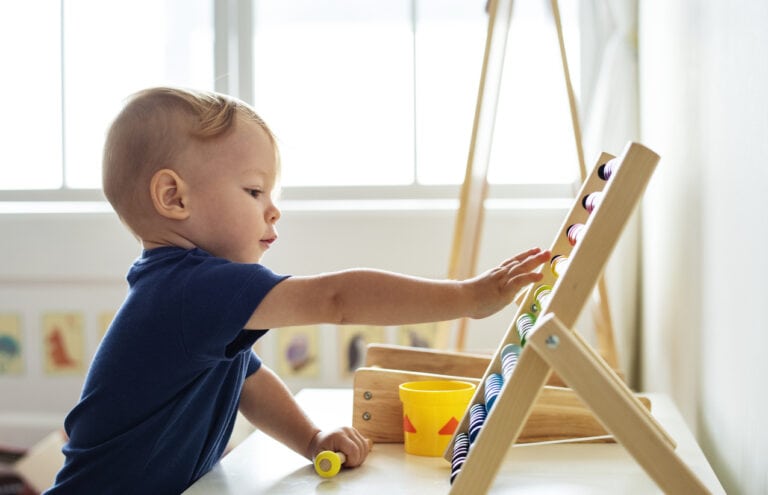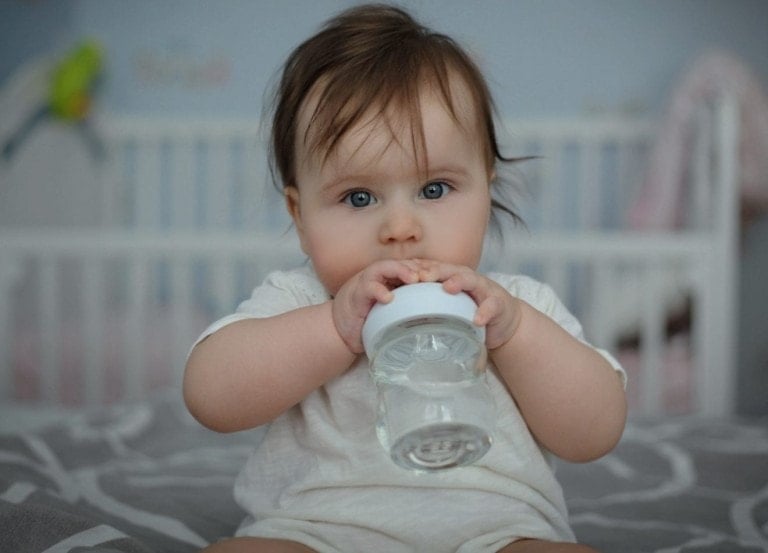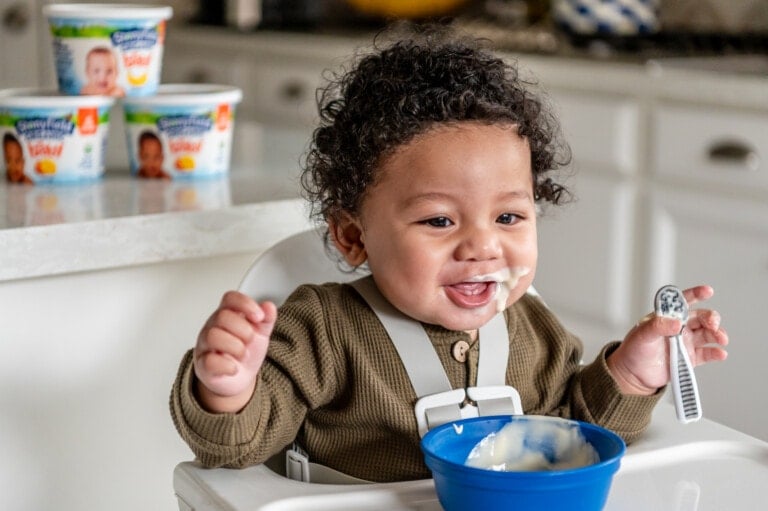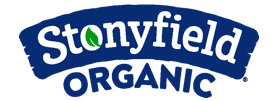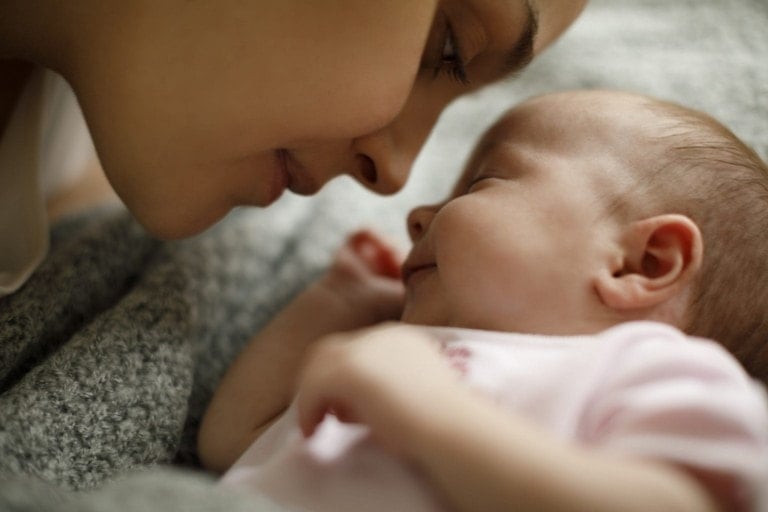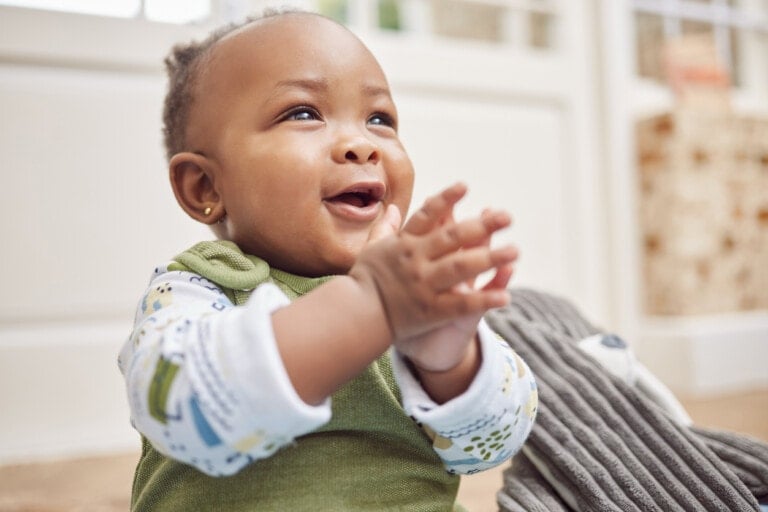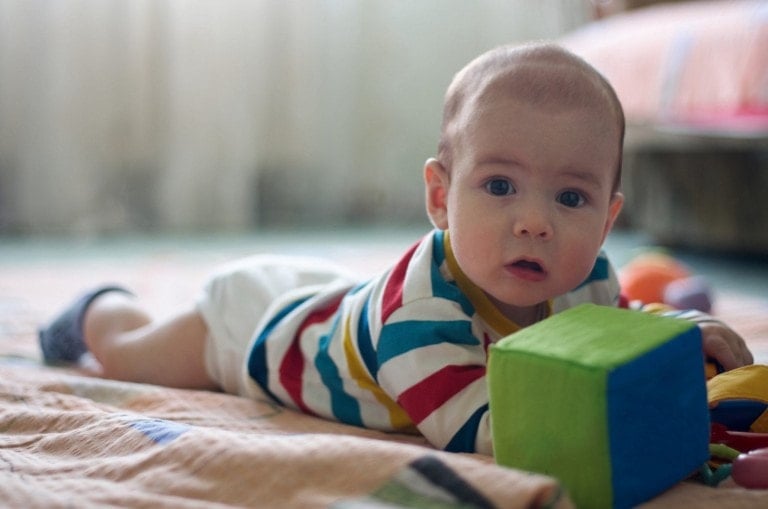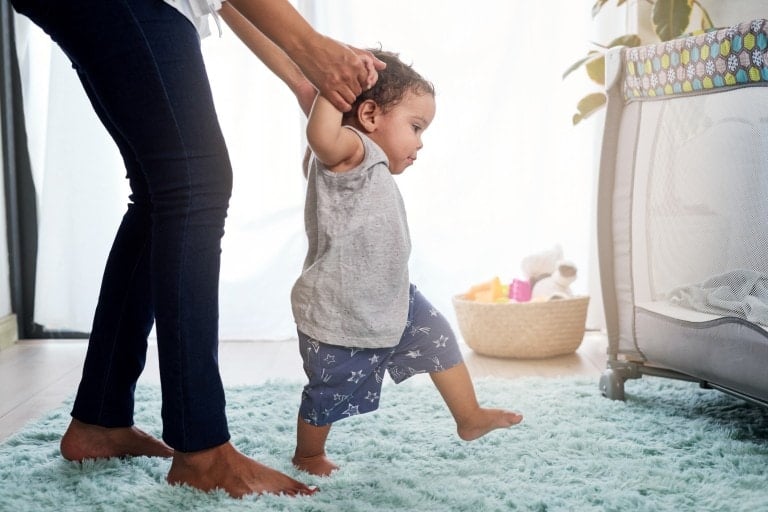Baby sign language is a current “hot topic” among mom groups, playdates, and social media. As with any choice you make for your child, it is important to learn what it is, why it can be beneficial, and how to implement it correctly if you choose to use it for your baby.
What Is Baby Sign Language?
Using sign language for babies and toddlers is a tool to help your child communicate before they can speak, or in the case of toddlers, communicate more than they can verbalize. Signs are chosen to help babies or toddlers communicate functional language to meet their needs and wants. The signs are paired with spoken language, and typically 1-2 signs are used in an entire sentence (you’re not signing everything you’re saying). As a result, this form of sign language is not a complete language. For example: “Johnny, do you want MILK?” with MILK being the only word signed in the sentence.
Is It Different Than American Sign Language?
Baby sign language and American Sign Language (ASL) are different. Sign Language (ASL) is a complete language with its own grammar, structure, and nuances, and is used by the Deaf community. ASL communicates abstract thought, has varying sentence structures, and is equally as complex as any spoken language.
On the other hand, in general, baby sign language is not as complex. There are various philosophies and approaches among baby sign language printed resources, online courses, and companies. A few primarily use made-up gestures with very little use of signs from ASL. However, many use a combination of invented “signs” and ASL. It is thought that some ASL signs are too complicated in either handshape or movements for babies and toddlers, so this philosophy believes it to be easier for the baby when these are simplified.
Even rarer are those that solely use ASL. As the language of the Deaf community and as a form of respect for their culture, programs of this philosophy believe that no one should alter the ASL language.1 After all, no spoken languages are examined for words that are too complicated for babies and altered by outsiders. If a word or sign is too complicated, the baby will say or sign an approximation which the adult learns. Over time, the approximation develops into the correct word or sign.
In English, for example: “water” may begin as “ah,” later “wa,” and then “wa-wa” before becoming “water.” This is expected and encouraged for spoken language development, and these sign language programs encourage it for the development of sign language. Furthermore, these programs allow the child to build on their skills to fully learn ASL and become bilingual (or multilingual) in the future.
What Are the Benefits of Using Sign Language for My Baby or Toddler?
Gross Motor Skill Development
Our gross motor skills develop and mature earlier than our speech skills. Babies are walking and running before they can use complete sentences. Sign language uses our motor skills.
Signing Earlier Than They Can Speak
A baby can sign earlier than their first spoken word if implemented with the proper strategies and methods. This is because your child’s desire to communicate their needs and wants is present before their speech skills can allow them to verbalize.2
Increase Confidence
Your child’s confidence increases because they can communicate more effectively, allowing their needs and wants to be met faster.
Reduce Tantrums
When a young child has a way to communicate effectively, it is possible to reduce the frequency and duration of tantrums.
Will Baby Sign Language Hinder or Delay My Child’s Spoken Language Development?
Not at all. A 2000 research study concluded that sign language does not delay or hamper spoken language in any way.3 While no research evidence states sign language can boost spoken language development or IQ, it is stated that sign language supports and facilitates spoken language.
At What Age Should I Start Teaching My Child?
It is never too early or late to begin signing with your baby or toddler. Some resources recommend starting at 6 months.4 However, babies can begin to respond to signs as early as 3-4 months old. On average, babies begin signing back to their parents between 8-12 months of age, but you may find your baby starting to sign before or after that age range.2
For younger babies, sign language enriches their early communication skills with functional vocabulary, meeting their needs and wants more effectively. For older babies and toddlers, sign language can fill in the gaps that cause frustration and build on their current verbal skills.
What Signs Should I Teach My Baby?
When deciding what signs to target, it is important to choose functional vocabulary to meet your child’s current needs and wants. This will look different for each baby and change as they grow and develop. These signs should also be often repeated throughout your child’s day in multiple contexts and settings.
For example, each caregiver could use MILK for a young baby before, during, and after every feeding. HELP could be used for older babies when they need assistance getting out-of-reach toys, stacking blocks, or picking up their water cup.
10 Signs To Get You Started With Baby Sign Language
When signing, you will primarily use your dominant hand (the hand you write with). In these videos, my dominant hand is my right hand, with bare fingers and wrist. My non-dominant hand is my left hand, with a ring and watch.
How to Sign “All Done”
5 handshape with both hands, palms rotate outwards twice.
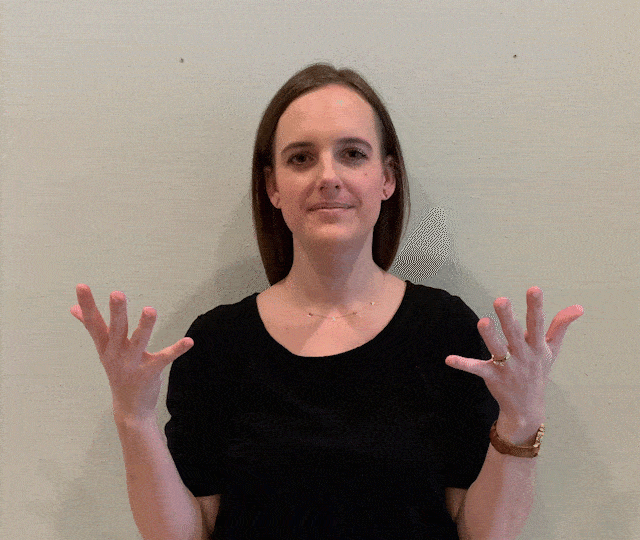
How to Sign “Bath”
A handshape with both hands rubbing up & down the chest.
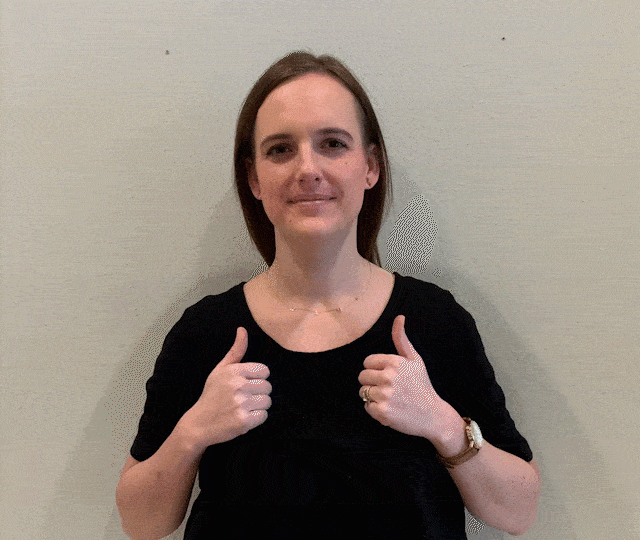
How to Sign “Book”
Palms together, then open to palms up, like opening a book.

How to Sign “Eat”
Flat O handshape, taps mouth.
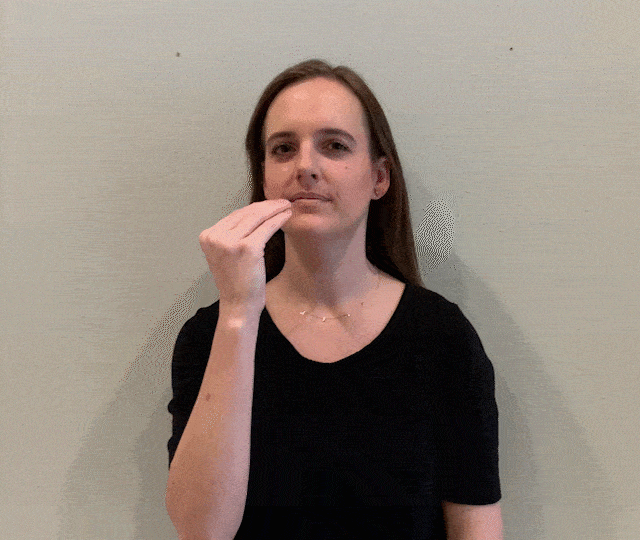
How to Sign “Help”
Dominant hand: A handshape; non-dominant hand: palm facing up. The non-dominant hand slightly lifts the dominant hand.

How to Sign “Hurt”
1 handshape with both hands pointing towards each other and twisting.
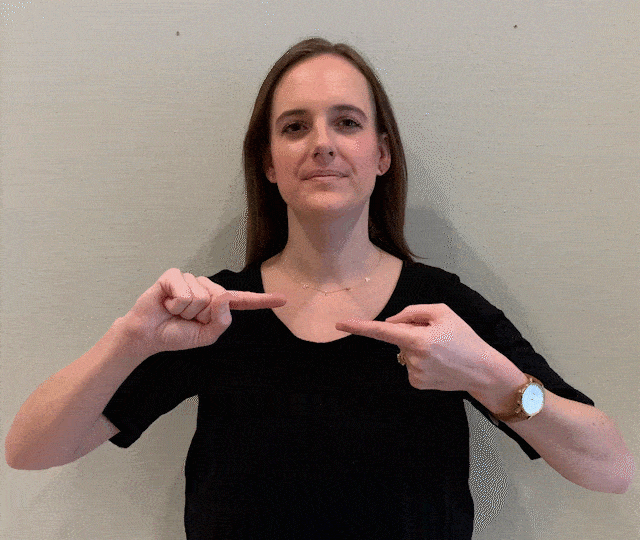
How to Sign “Milk”
C to S handshape, squeezing, like milking a cow.
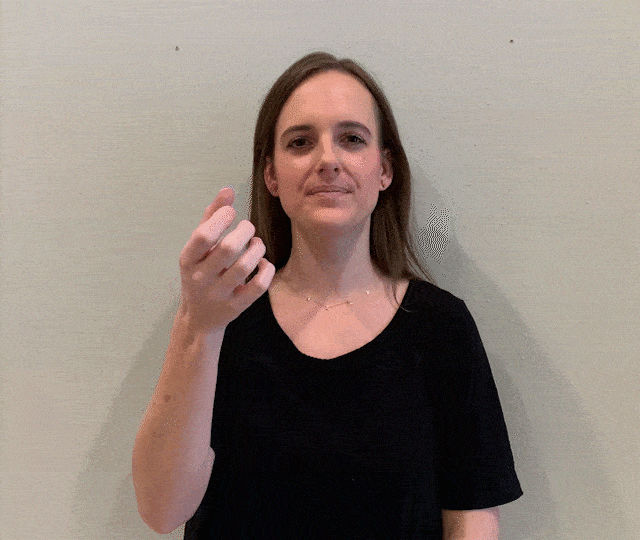
How to Sign “More”
Flat O handshape with both hands, tap together twice.

How to Sign “Play”
Y handshape with both hands, and rotate outwards twice.
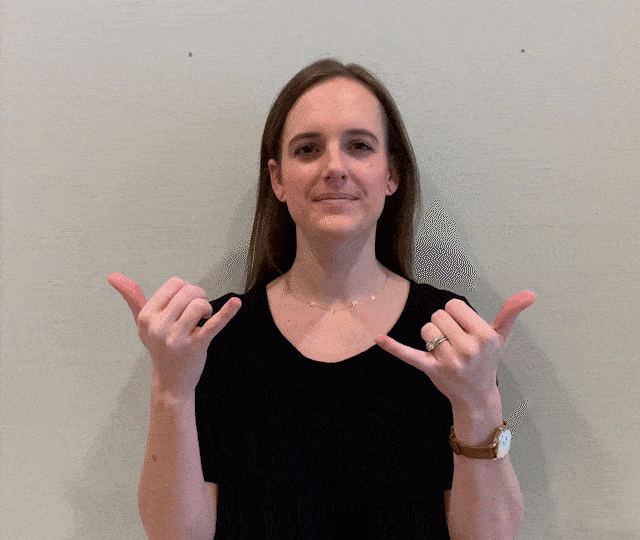
How to Sign “Sleep”
5 handshape at the forehead, drops to flat-O handshape at the chin.
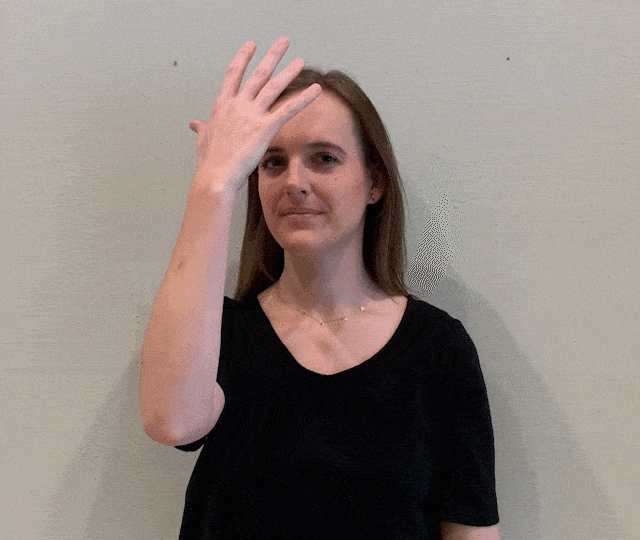
How Can I Make This Easier To Teach My Baby?
This takes practice on your part. Begin with a few signs to get in the swing of things and add more as you become more confident and consistent. You cannot overwhelm your child by signing “too much.” Incorporate signs into your daily routines such as feedings and mealtime, bath and evening routine, and play. Signs should be used during meaningful experiences and activities, not drilled or taught in isolation.
Where Do I Learn More?
There are many baby sign language books and online resources, such as Amazon and YouTube. Keep in mind the three types of philosophies mentioned above. Many popular books are not written or published by companies or individuals who know sign language, and videos can be uploaded online by anybody. Both lead to misinformation.
When searching for resources, it is best to go with an expert in the field. An expert in sign language for babies and toddlers is someone who has a degree or certification in a Deaf related field (such as an interpreter or Teacher of the Deaf), a background in child development, learned ASL from the Deaf community, and respects the culture and values of the Deaf.
Happy signing!




















